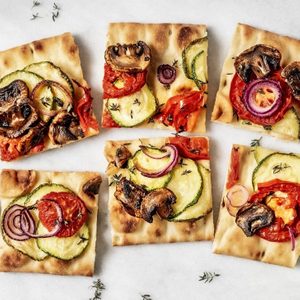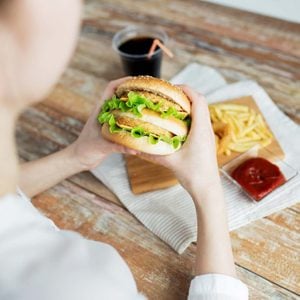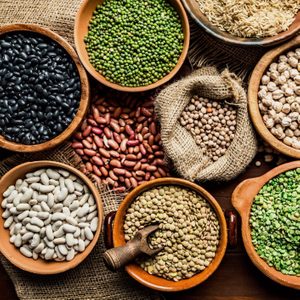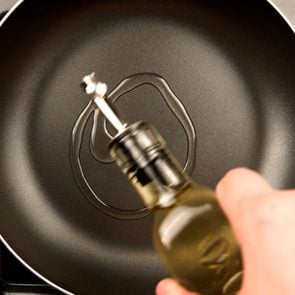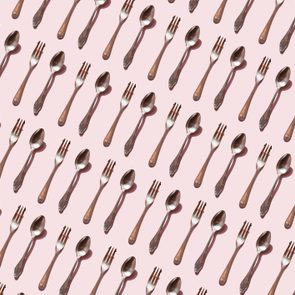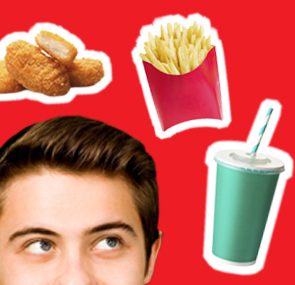How Bad Are Fried Foods, Really?
Updated: Jun. 10, 2021
Fried foods can be heavy in calories and cooked in unhealthy oils. But there are smart ways to eat fried food, not to mention healthier ways to make it.
How bad are fried foods?
Fried food may be crispy, crunchy, and delicious. But there are lots of reasons health experts aren’t exactly fans. And that’s putting it mildly.
Here’s the problem: When food goes into the frying pan it soaks up loads of oil, which happens to be pure fat. Considering that just one tablespoon of cooking oil contains 14 grams of fat and 120 calories, regularly nibbling on a handful of chips or fries can make weight management a challenge.
There are other concerns, too. Fried foods frequently travel with other less-than-healthy foods. (Chicken on a biscuit, anyone?) So you could be getting a double dose of fat, sodium, and refined carbs.
(These are the cooking mistakes that can make your food more toxic.)
But do fried foods always spell trouble? “Fried foods are a very broad category, so their health impact may depend on lots of different factors,” says Julie Stefanski, RDN, a registered dietitian nutritionist and spokesperson for the Academy of Nutrition and Dietetics. Things like the type of cooking oil, frying temperature, serving size, and how often you eat them all matter, she adds. (These are the healthiest cooking oils to use.)
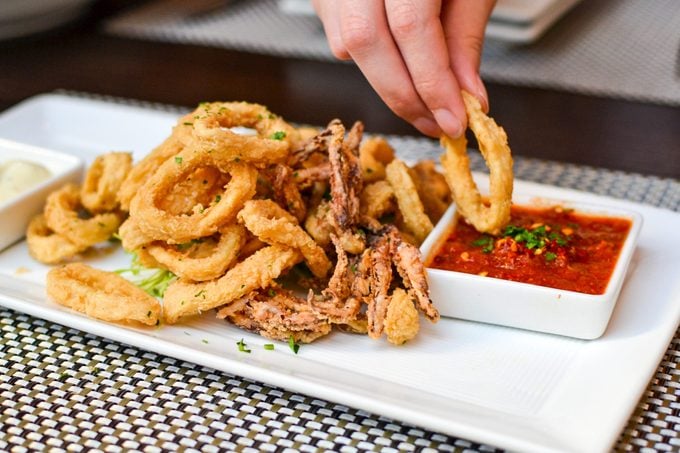
Fried food and your health
Whether you love all things fried, or just indulge in the occasional french fry, here’s what fried foods mean for your health.
Heart disease risk
For years, the research on frying and heart disease has been mixed. Now, a review of 17 studies published in Heart in 2021 sheds new light on the subject. Among 562,445 people, those who ate the most fried food were 22 percent more likely to develop heart disease than those who ate the least. They were also 28 percent more likely to experience a major cardiovascular event, such as stroke or heart failure.
But what about the occasional indulgence? Turns out, just one four-ounce serving per week (the equivalent of a medium serving of McDonald’s fries) increased coronary heart disease and stroke risk by two to three percent, respectively. It also bumped up the odds of heart failure by 12 percent.
What’s behind the findings? “Large amounts of dietary fat, excess energy, and trans-fatty acids from fried foods may be important reasons for a greater risk of cardiovascular disease,” says study co-author Fulan Hu, an associate professor of public health at Shenzhen University Health Sciences Center in China. Frying foods at super high temperatures can also produce compounds called advanced glycation end products, which promote inflammation and oxidative stress that are additionally linked to cardiovascular disease, he explains.
Type 2 diabetes risk
Type 2 diabetes may seem like it’s all about carbs. But it’s also about body weight. Why? “Weight gain can make it difficult for the body to use insulin properly and may raise blood sugar levels,” says Stefanski. “Since fried foods are very calorie dense they may provide more energy than a person requires.”
If they’re part of a diet filled with other unhealthy foods—such as refined carbs, and red and processed meat—they may be even more likely to lead to diabetes, according to a study in the Journal of Nutrition in 2017. No wonder the American Diabetes Association recommends avoiding them.
Cancer risk
According to the National Cancer Institute, cooking certain foods, like potatoes, at high heat may produce a potentially carcinogenic byproduct called acrylamide. So, in theory, some fried foods could cause cancer. In reality, the research is somewhat sketchy. “The largest exposure that people have to acrylamide is via tobacco smoke, not necessarily fried food,” says Stefanski. “At this time, we really don’t know how much fried food is a trigger for cancer development.”
(Here are the cancer-causing foods doctors try to avoid.)
Not all fried foods are equal
Whether it’s a gooey plate of chicken parmesan or a basket of deep-fried jalapeno poppers, most of our fried food comes from takeout and restaurants.
“When you’re eating out, you may not know what type of oil is used in the deep fryer,” says Sara Haas, RDN, a registered dietitian nutritionist and chef. Even though many restaurants have moved away from using partially hydrogenated oils, not all of them have. That means your takeout meal could be laced with trans fats, which may up the risk of heart attack, stroke, and type 2 diabetes.
“Also, keep in mind that restaurants tend to re-use their frying oils, which can cause the oil to break down and form trans fats,” says Haas.
(These are the foods you shouldn’t reheat in the microwave.)
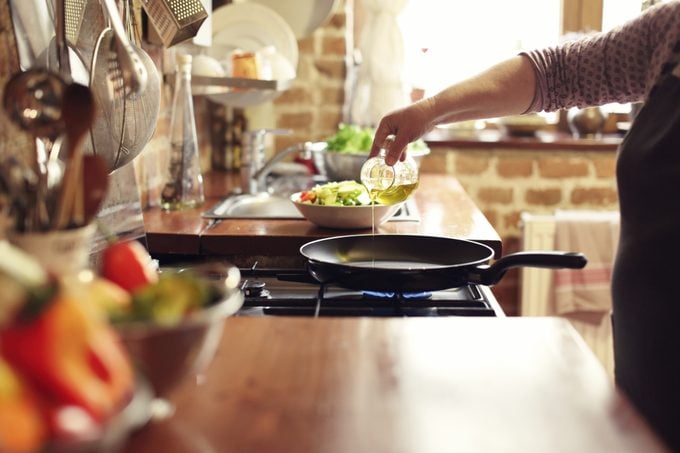
Healthier fried food is possible
The good news is you don’t have to say goodbye to crispy goodness. For healthier fried food try these tips:
Pick the right oil
For healthy frying, nutritionists love avocado, canola, and high-oleic sunflower oils. They’re rich in heart-friendly monounsaturated fats. Plus, they have a high smoke point, so they won’t break down when you crank up the heat, says Haas. (These are the smoke points of cooking oils.)
Get the right amount of sizzle
“Make sure your cooking oil is fully heated so your food will ultimately spend less time in the pan sopping up oil,” says Jackie Newgent, RDN, a registered dietitian nutritionist, chef, and author of The Clean & Simple Diabetes Cookbook. You’ll know it’s ready when it shimmers.
Go easy on the breading
“Beware of over-breading,” says Newgent. The more breadcrumbs or flour you use, the more oil your food will absorb, she explains.
Try cross-over cooking
“Consider frying just to get color and crispness on the outside, then oven-bake to finish cooking on the inside,” says Newgent. Another oil-saving option is shallow frying, using a thin coating of oil rather than a whole pan full, says Haas.
Get the right gadgets
Frying isn’t the only way to get deliciously crunchy meat, chicken, or fish. Haas recommends oven baking, with a little twist. “Elevate food on a baking sheet with a wire rack,” she says. “This will prevent steaming that can happen when you set food directly onto the baking sheet.”
This trick is also magic for potato chips, mozzarella sticks, or fries. Or invest in an air fryer. Nutritionists swear by them.
Consider the frozen food aisle
Not everyone’s into cooking. If that’s you, there are loads of healthy, tasty options in your supermarket’s freezer section. The best ones are made with healthful unsaturated oils, so compare labels. (These are the frozen foods nutritionists actually buy.)
The bottom line
With the right strategy, there’s still room for the occasional handful of fries. “It can be really helpful to take a look at how frequently you’re eating fried foods,” says Stefanski. “If they’ve become a regular part of your diet, shifting them to the special treat category can be a great place to start.”
Need some cooking inspiration? Here are the bestselling healthy cookbooks on Amazon.














